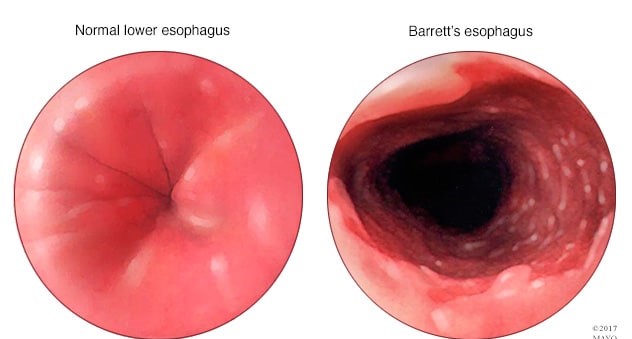A nurse at an ophthalmology clinic is providing medication teaching to a client who has open-angle glaucoma. Which of the following instructions should the nurse provide?
Apply the medication when you are experiencing eye pain
Use the medication only until the intraocular pressure returns to normal
Use the medication for approximately 10 days, then gradually taper off
Apply the medication on a regular schedule for the rest of your life
The Correct Answer is D
Choice A reason: This is incorrect because applying the medication when you are experiencing eye pain can be ineffective or harmful for treating open-angle glaucoma. Open-angle glaucoma is a chronic condition that causes increased pressure inside the eye and damage to the optic nerve, which can lead to vision loss. Eye pain is not a common symptom of open-angle glaucoma, but rather an indication of acute angle closure glaucoma, which is a medical emergency that requires immediate treatment. The nurse should instruct the client to apply the medication as prescribed, regardless of pain level, and seek medical attention if they experience severe eye pain, headache, nausea, or blurred vision.
Choice B reason: This is incorrect because using the medication only until the intraocular pressure returns to normal can cause recurrence or worsening of open-angle glaucoma. Intraocular pressure is the pressure inside
the eye that can affect eye health and vision. Normal intraocular pressure ranges from 10 to 21 mmHg, but it can vary depending on age, time of day, or other factors. The nurse should instruct the client to monitor their intraocular pressure regularly and report any changes to their provider, but not to stop using
the medication without consulting their provider first.
Choice C reason: This is incorrect because using the medication for approximately 10 days, then gradually tapering off can cause rebound or adverse effects of open-angle glaucoma. The medication for open-angle glaucoma can be either beta-blockers, such as timolol, or cholinergic agents, such as pilocarpine, which work by reducing fluid production or increasing fluid drainage in the eye. The nurse should instruct the client to follow their provider's instructions on how long and how much to use the medication and not to change or discontinue it abruptly without their provider's approval.
Choice D reason: This is correct because applying the medication on a regular schedule for the rest of your life can help control and prevent the progression of open-angle glaucoma. Open-angle glaucoma is a lifelong condition that requires consistent and continuous treatment to maintain normal intraocular pressure and prevent vision loss. The nurse should instruct the client to apply the medication at the same time every day and not to miss or skip any doses. The nurse should also teach the client how to store, handle, and administer the medication properly and safely.
Nursing Test Bank
Naxlex Comprehensive Predictor Exams
Related Questions
Correct Answer is B
Explanation
Choice A Reason: This choice is incorrect. Cranial Nerve VIII is the vestibulocochlear nerve, which is responsible for hearing and balance. It does not affect vision or eye movements.
Choice B Reason: This is the correct choice. Cranial Nerve II is the optic nerve, which is responsible for transmitting visual information from the retina to the brain. It affects visual field and visual acuity, which are measures of peripheral and central vision, respectively.
Choice C Reason: This choice is incorrect. Cranial Nerve I is the olfactory nerve, which is responsible for smell. It does not affect vision or eye movements.
Choice D Reason: This choice is incorrect. Cranial Nerve VII is the facial nerve, which is responsible for facial expressions and taste. It does not affect vision or eye movements.
Correct Answer is B
Explanation
Choice A reason: This is incorrect because allergies are not a risk factor for developing Barrett's esophagus. Allergies are hypersensitive reactions of the immune system to certain substances, such as pollen, dust, or food. They can cause symptoms such as sneezing, itching, or hives, but they do not affect the esophagus or stomach acid.
Choice B reason: This is the correct answer because gastroesophageal reflux disorder (GERD) is the most common risk factor for developing Barrett's esophagus. GERD is a condition where the lower esophageal sphincter (LES) does not close properly and allows stomach acid to flow back into the esophagus. This can cause inflammation, irritation, and damage to the esophageal lining. Over time, this can lead to changes in the cells of the esophagus, which is called Barrett's esophagus.
Choice C reason: This is incorrect because being a vegetarian is not a risk factor for developing Barrett's esophagus. Being a vegetarian means avoiding meat and animal products in the diet. This can have health benefits such as lower cholesterol and blood pressure levels, but it does not affect the esophagus or stomach acid.
Choice D reason: This is incorrect because Barrett's esophagus is not a genetic condition that one is born with. Barrett's esophagus is an acquired condition that results from chronic exposure to stomach acid in the esophagus. It is not inherited from one's parents or passed on to one's children.

Whether you are a student looking to ace your exams or a practicing nurse seeking to enhance your expertise , our nursing education contents will empower you with the confidence and competence to make a difference in the lives of patients and become a respected leader in the healthcare field.
Visit Naxlex, invest in your future and unlock endless possibilities with our unparalleled nursing education contents today
Report Wrong Answer on the Current Question
Do you disagree with the answer? If yes, what is your expected answer? Explain.
Kindly be descriptive with the issue you are facing.
